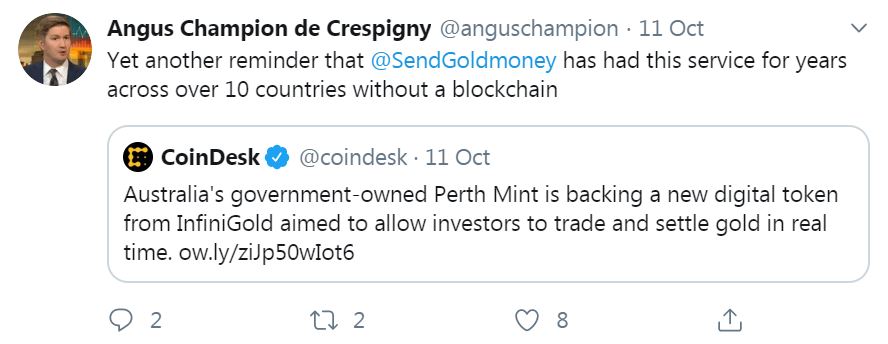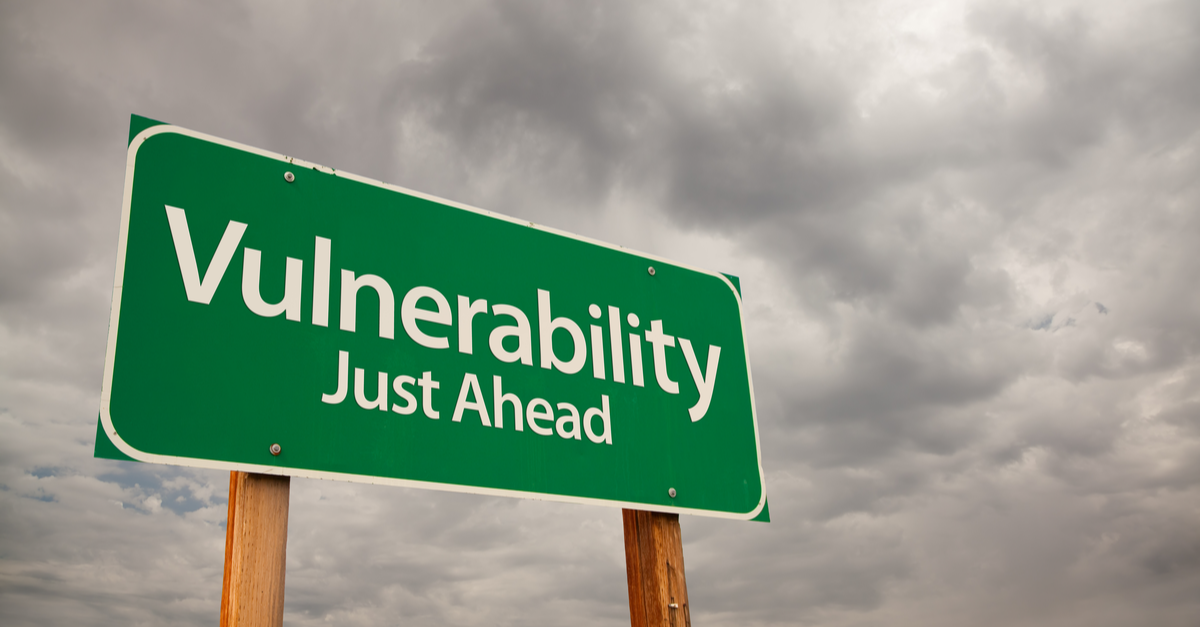Warning: Undefined global variable $buildercount in /home4/sqzstage/public_html/rush/wp-content/themes/rush/functions.php on line 155
The Perth Mint announced their blockchain gold product this week.
Like the Perth Mint we at SendGold are excited about digital gold, but as an industry, we need to ensure that record-keeping systems for digital gold should solve, rather than cause, regulatory, security, and accessibility problems for prudent gold investors.
In our view blockchain-based record-keeping addresses just a fraction of the digital gold opportunity and currently presents more security and regulatory problems than it solves.
From Angus Champion de Crespigny, EY’s former FSO Americas Crypto-asset and blockchain Leader (2015 – 2018):

The irony of gold and blockchain
Our evaluation of crypto-currency platforms began in 2014 under the guidance of our Chief Security Advisor Steven Wilson. Steve is a world-recognized expert in cyber-security in financial services with nine patents in the domain.

Blockchain security is complicated and difficult to pin down. While blockchain security techniques have evolved over time, so have the attacks against them. Last year more than $1.9B in crypto-assets were irretrievably stolen. In 2019, through August that number has already ballooned to $4.2B, even with the much lower prices in 2019 for nearly all crypto-assets.
The reason to include gold in an investment portfolio is to mitigate risk. Digitizing gold on a blockchain platform only serves to reduce that benefit. And when these real security problems are added to the fact that blockchain systems are much slower and much more complex to operate, the cost/benefit of blockchain in its current form for gold record-keeping becomes negative.
Several prominent early blockchain gold proponents like Goldmoney in Toronto, The Royal Mint of the U.K., and HelloGold in Malaysia, after long investment and experimentation with the technology, have discovered this in practice and have discontinued the blockchain versions of their products.
Leaving regulators offside
Since we have been in-market with SendGold we have witnessed additional regulatory risk associated with crypto-currencies first-hand. These risks are not just with regulatory bodies like AUSTRAC but also with our B2B customers and with our banking partners.
The global anti-money laundering body FATF (Financial Action Task Force) passed a new set of regulations in June 2019 (implementing “the travel rule”) that will curtail crypto-currency transfers by requiring Virtual Asset Service Providers (VASPs) to verify the identity of persons controlling blockchain addresses on both the sender and the recipient (beneficiary) side.
Using a blockchain record-keeping system would have made it difficult, if not impossible, to integrate with the banking partners we required to make SendGold universally accessible. It would also have made it difficult, if not impossible, to provide our B2B Gold-as-a-Service to our growing portfolio of partners. Most do not have the remit to evaluate and hedge crypto-currency risk in their existing businesses.
Leaving out half of global gold demand
While being careful not to confuse crypto-currency with blockchain-based record keeping, interoperability is a key consideration in distribution. India and China represent more than 50% of global gold demand, but crypto-currency usage is severely restricted in both countries.
- In 2017, China declared it illegal to exchange the national currency (RMB) for any form of crypto-currency.
- India is in the process of passing a law that will make all crypto-currency dealing (including mining) an offence punishable by 10 years in prison. India is no stranger to implementing broad restrictions around currency movements, as their national demonetisation program of 2016 will attest.
At SendGold we’ve stress-tested our platform across a global regulatory environment, as our mission is universal access to 100% ownership of the gold.
Gold Prices
The Perth Mint has a good brand and some customers will value the guarantee by the Western Australian (WA) government. That guarantee is actually to deliver Australian dollars, not gold, since the WA government does not own the gold. The Perth Mint charges a premium price based on this guarantee.
But gold is gold. Once one is certain of its quality (exclusively from refiners certified by the London Bullion Metals Association), its vaulting security (Brink’s Global Services), auditing from a top global firm (Bureau Veritas), and insurance against damage or theft (by Lloyd’s of London), the playing field is level to compete on price.
SendGold offers each of these features already, and with access to wholesale dealers at the top of the global physical gold market we are able to be very competitive on the price of the world’s most reliable safe haven asset.
Today, and Tomorrow
At SendGold today we offer fully-compliant, global, secure digital gold that can address practically any use case, from global P2P payments to DIY wealth, loyalty to gifting, games and more.
Due to its stability and dependability, gold is our focus, and we have stress-tested and engineered a record-keeping platform to match gold’s properties, based on unarguable outright individual ownership of physical metal.
We keep a close eye on emerging ledger technologies and have designed our Gold-as-a-Service APIs to be chain-agnostic. So if and when blockchain performance, security and compliance match our customer’s real-world needs, we can plug-in digital gold liquidity to these distribution platforms. Whichever way the digital gold industry evolves we have the platform and approach that delivers digital gold in ways that address the many constraints and opportunities across the e-commerce and consumer landscape.
SendGold has been shortlisted for the My Business Awards 2019
Devils, Details, and The Road to Sustainable Digital Gold
Free Lunch Economics (And Why It Doesn’t Work)
Gold ETF: It always pays to read the fine print



